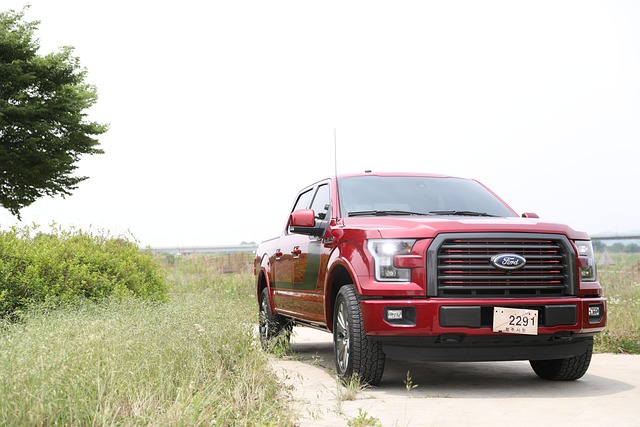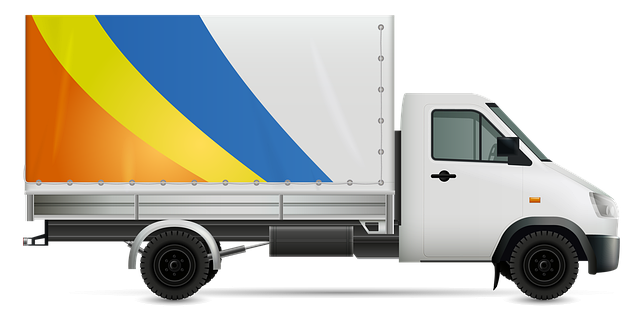Learn how to register your car in California with our step-by-step guide. First, understand the eligibility requirements for car registration, which include being a California resident and owning a vehicle that meets emissions standards. Next, gather necessary documents like proof of ownership and insurance. Perform a DMV VIN verification by checking the vehicle’s unique identifier with the California Department of Motor Vehicles (DMV). Complete the application process at your local DMV office, pay the registration fees, and receive your custom license plate.
- Understand Eligibility Requirements for Car Registration
- Gather Necessary Documents for California DMV
- Perform VIN Verification: Step-by-Step Guide
- Complete Application Process at Your Local DMV Office
- Pay Car Registration Fees and Receive Your Plate
Understand Eligibility Requirements for Car Registration

Before registering your car in California, it’s crucial to understand the eligibility requirements set by the Department of Motor Vehicles (DMV). One key step is ensuring your vehicle meets all safety and emission standards. This includes passing a smog test, which verifies that your car’s exhaust system is functioning correctly and emits at safe levels. The DMV also requires a Vehicle Identification Number (VIN) verification to ensure the vehicle’s identity and ownership history are accurate.
Additionally, you’ll need proof of insurance and identification documents. A mobile vin verifier or mobile vin inspection can streamline this process by providing immediate digital confirmation of your car’s details, including its VIN, making it easier to meet these requirements. This ensures a smooth registration experience in California.
Gather Necessary Documents for California DMV

Before heading to the California DMV, ensure you gather all the essential documents required for car registration. This includes your vehicle’s registration certificate from the previous state, proof of insurance, a completed application form, and a valid driver’s license. Additionally, you’ll need to provide a DMV-issued identification card or passport as primary forms of ID. If you’ve recently purchased a used car, it’s crucial to have the seller sign over the title, along with their original signature and date.
For a seamless process, consider conducting a DMV VIN verification before visiting. This step ensures that your vehicle’s unique identification number (VIN) is accurate and matches the details in the DMV system. If you prefer a mobile vin inspection or want to use a mobile vin verifier, many services offer this as an option, making it easier to verify your car’s information before registering.
Perform VIN Verification: Step-by-Step Guide

Performing a Vehicle Identification Number (VIN) verification is a crucial step in registering your car with the California Department of Motor Vehicles (DMV). This process ensures that the vehicle matches the details on its registration and title, helping to prevent fraud and ensuring safety standards. Here’s a simple, step-by-step guide:
1. Obtain Your VIN: Locate the 17-character unique identifier number found on the vehicle’s certificate of origin, engine block, or frame.
2. Prepare Necessary Documents: Gather important paperwork, including your driver’s license, proof of insurance, and any applicable fees.
3. Use a Mobile Vin Inspection Service: For convenience, many opt for a mobile vin inspection service or a trusted `mobile vin verifier`. These services can provide accurate results quickly without the need to visit a DMV office.
4. Enter Your VIN Online: Alternatively, you can perform a dmv vin verification through the California DMV’s official website. They offer an online tool that checks the vehicle’s history and status.
5. Review Results: Ensure the reported information matches your vehicle’s details. Any discrepancies may require further investigation or documentation.
6. Complete Registration: Once verified, proceed with the registration process at a local DMV office or online, depending on your preference.
Complete Application Process at Your Local DMV Office

To complete the car registration process in California, you’ll need to visit your local Department of Motor Vehicles (DMV) office. This is where you’ll submit all necessary paperwork and undergo critical steps like a vehicle inspection and VIN verification. The DMV staff will guide you through the application process, ensuring that your car meets all legal requirements for registration.
During this visit, be prepared to present essential documents such as proof of insurance, vehicle ownership, and identification. A mobile VIN verifier or alternative services may be available to streamline the VIN inspection process, offering convenience by allowing you to complete this step before arriving at the DMV. This modern approach ensures a faster, more efficient registration experience.
Pay Car Registration Fees and Receive Your Plate

After completing the registration process and providing all necessary documents, it’s time to pay your car registration fees. These fees cover various costs associated with vehicle ownership and are typically calculated based on factors like the make, model, and age of your car. You can usually pay online through the California DMV website or in person at a local DMV office. Once your payment is processed, you’ll receive your unique vehicle identification number (VIN) verification, which plays a crucial role in identifying your vehicle’s history and authenticity during the registration process.
Following this step, you’ll be issued official license plates for your car. In California, these plates are typically assigned based on your vehicle’s registration status and available stock. You’ll need to securely attach these plates to your vehicle, usually on the rear, as specified by state regulations. It’s important to keep your license plates visible and up-to-date to avoid any legal issues or penalties related to plate expiration or alteration, especially when utilizing a mobile VIN verifier for an efficient and accurate inspection process.
Registering a car in California involves understanding eligibility requirements, gathering essential documents, performing a DMV (Department of Motor Vehicles) VIN (Vehicle Identification Number) verification, completing an application at your local DMV office, and paying registration fees. By following these steps diligently, you’ll ensure a smooth process for getting your vehicle on California’s roads legally. Remember to keep your paperwork up-to-date and follow any additional guidelines provided by the DMV to maintain compliance.
